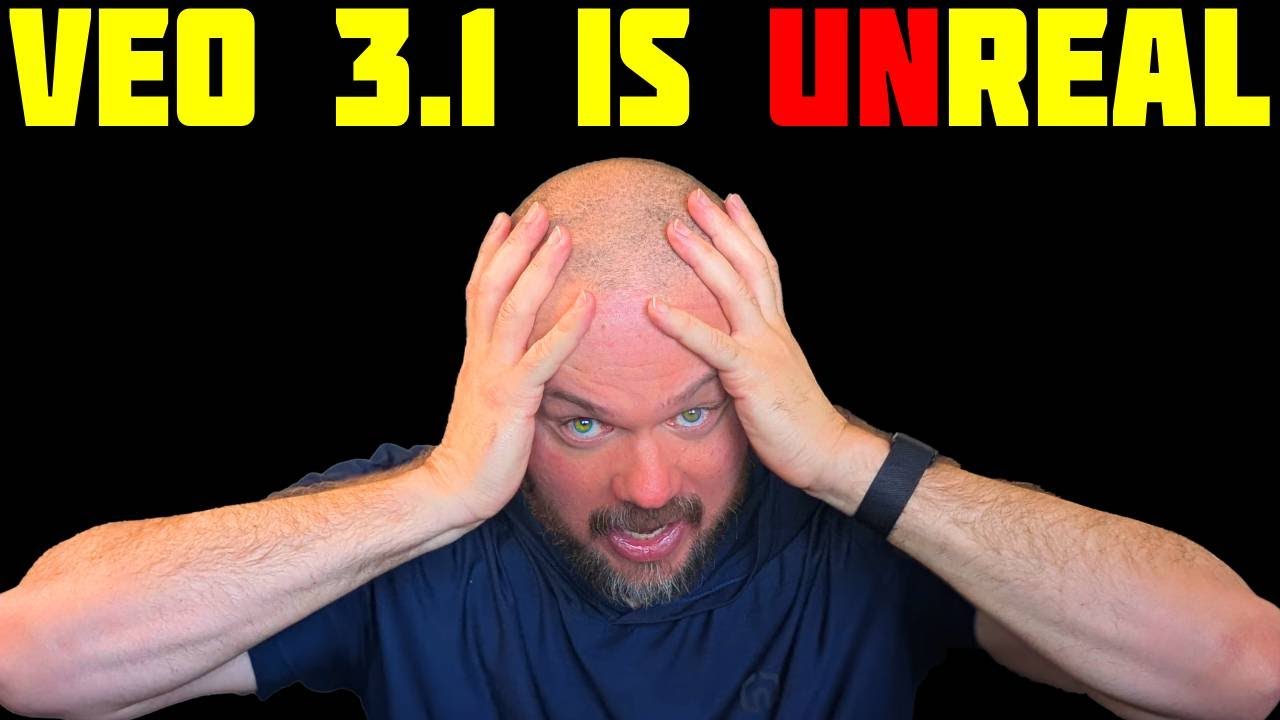The video compares Google DeepMind’s VEO 3.1 and OpenAI’s Sora 2 AI video generation models, highlighting VEO 3.1’s strengths in cinematic visuals and innovative features like frame-to-video generation, while noting Sora 2’s superior coherence, character consistency, and humor. Ultimately, VEO 3.1 is praised for commercial and artistic applications, whereas Sora 2 excels in narrative-driven content, with both models showing promising but distinct capabilities.
The video provides a detailed side-by-side comparison of two AI video generation models: VEO 3.1 by Google DeepMind and Sora 2 by OpenAI. The presenter tests various prompts to evaluate the capabilities of VEO 3.1, showcasing its ability to generate complex scenes such as a grandma scaring off an alligator, a knight fighting an octopus-like monster, and a polar bear interviewing people on the streets of San Francisco. While VEO 3.1 produces impressive visuals and audio, there are occasional inconsistencies, such as character role confusion and some unnatural movements. The presenter notes that VEO 3.1 tends to avoid copyrighted characters, likely due to Google’s cautious approach to intellectual property.
Comparisons with Sora 2 reveal that while both models perform well, Sora 2 often delivers more coherent and artistically polished results, especially in scenes involving multiple characters or copyrighted content. For example, in a video game fight scene and a walking-with-a-praying-mantis scenario, Sora 2’s output is more dynamic and consistent. The presenter appreciates Sora 2’s ability to better capture humor and character interactions, although VEO 3.1 excels in cinematic shots and integrating specific images or backgrounds, making it potentially more suitable for commercial or artistic uses.
The video also explores new features in VEO 3.1, such as the ability to generate videos from text, frames, or “ingredients” (images or elements added to the scene). The presenter demonstrates how VEO 3.1 can animate transitions between images, like folding an origami bill into a bowl, and how it can incorporate specific characters or objects into scenes. Despite some minor glitches, these features show promise for more customized and controlled video generation. The presenter also highlights that VEO 3.1 sometimes struggles with complex prompts, such as visualizing a ring world or Dyson sphere, which remain challenging for all current AI video models.
Throughout the comparison, the presenter emphasizes that both models have strengths and weaknesses. Sora 2 tends to produce more natural dialogue, better character consistency, and more engaging storytelling, while VEO 3.1 offers impressive visual fidelity, cinematic framing, and innovative features like frame-to-video and ingredient-based generation. The presenter suggests that VEO 3.1 might be better suited for commercial projects requiring specific visual styles, whereas Sora 2 remains the preferred choice for more narrative-driven or humorous content.
In conclusion, the video acknowledges that VEO 3.1 is a strong new competitor in AI video generation, with exciting new capabilities and a focus on cinematic quality. However, Sora 2 still holds an edge in overall coherence, humor, and character interaction. The presenter invites viewers to share their opinions on which model they prefer and notes that both tools will likely continue to evolve rapidly. The comparison offers valuable insights for anyone interested in the current state and future potential of AI-generated video content.
